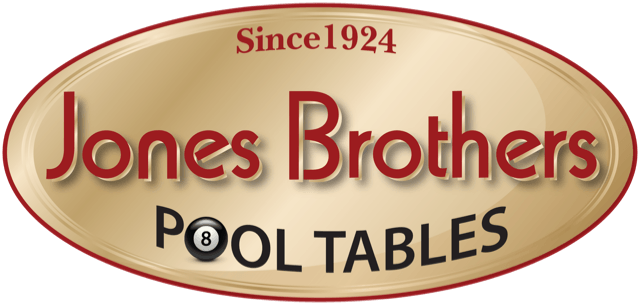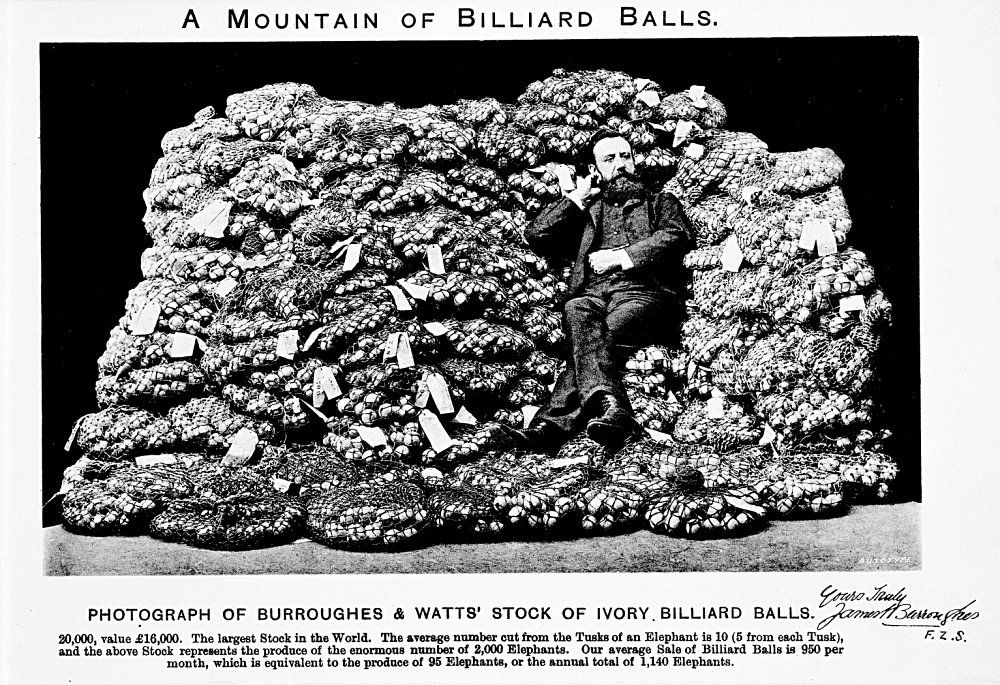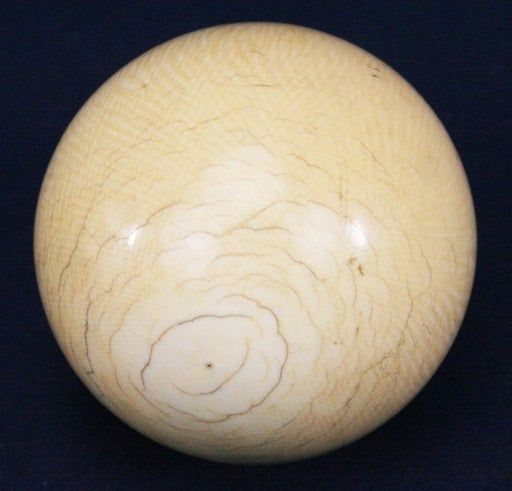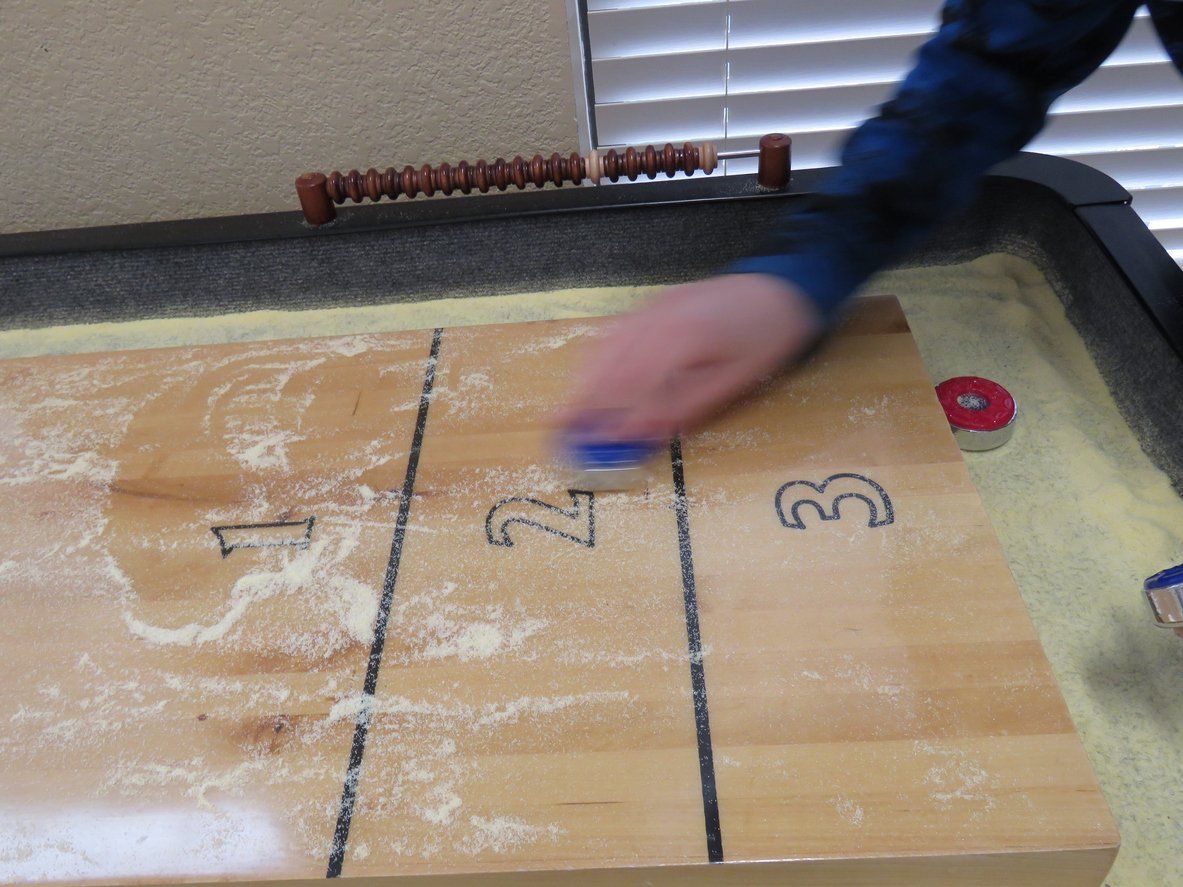History of the Billiard Ball
October 8, 2019
The Beginning of Billiard Balls
Ivory Billiard Balls
Many people don't know that the best billiard balls once came exclusively from the tusks of Asian elephants. No natural material other than ivory had the size, strength, and beauty to perform in billiard rooms and halls.
The earliest known written reference to ivory billiard balls is in the 1588 inventory of the Duke of Norfolk, but these types of balls were recorded to be in high demand and more main stream as far back as 1627. Then the dyed and number balls were not as popular until the 1770's. Ivory balls were used up until the 1970's with A.E. Schmidt manufacturing them until 1975.
The problem with Ivory is that it is a natural substance and tends to react poorly with certain temperatures and humidity. It can shrink when very dry, and swell when conditions are humid. Another problem is that an elephant’s tusks have a nerve that runs down the middle of it and it can be seen when the tusk is sliced opened. This meant that there could be a hole in the balls that had been cut from area around the base of the tusk. These holes were filled with ebony, and were known as the “spot” ball. The “spot” balls were considered to be a disadvantage for players. This is due to the occurrence of them kicking when the ivory and ebony came in to contact.
Manufacturing ivory balls required the services of skilled craftsmen known as "ivory turners". Raw tusks arrived at shops in New York and Chicago where master ivory turners would reduce blocks of ivory to gleaming spheres. The turners would have to make sure the ivory ball was spot on the center of the tusk to assure that it was balanced and rolled true. Great care had to be taken to that during the process of cutting and turning of the balls, that the balls did not heat up too quickly and crack. Then the balls had to be left to season for almost two years before they were considered suitable for play.
Ivory balls required lots of maintenance and had to be trued or re-rounded constantly. In the 1800's, it was customary to check the size and weight of the balls in front of all present before beginning a championship match. Periodically, these ivory balls would also have to go to master craftsman to be reshaped and shined as they would sometimes warp or go out of round. Ivory pool balls were also prone to yellowing with age and tended to crack in humid climates or if struck with excessive force.
On average, a tusk would only yield up to 5 balls. Sometimes a shipment of 50 tusks would only have as few as 1 tusk that was suitable for making billiard balls. Of course you could run in to complications involved with supply, shipping, and storage of the tusks as well. All of these things made ivory balls a very expensive matter. There were so expensive, that a set of matched ivory billiard balls (3 balls total) went for around $60.00 in the 1870's or over $1,200 today.
By the mid-19th century, elephants were being slaughtered for their ivory at an alarming rate, just to keep up with the demand for combs, piano keys, commercial trinkets and high-end billiard balls. This placed the wild elephants in serious jeopardy in the 19th century.
A New Kind of Billiard Ball

As we all know, we may be stuck in our homes for just a bit, which could get pretty boring! There is only some much AMI work you can do, TV/YouTube you can watch, and video games you can play. Have you thought about getting something new to entertaining you and your family? Here at Jones Brothers Pool Tables, we have a few solutions to conquer the boredom.
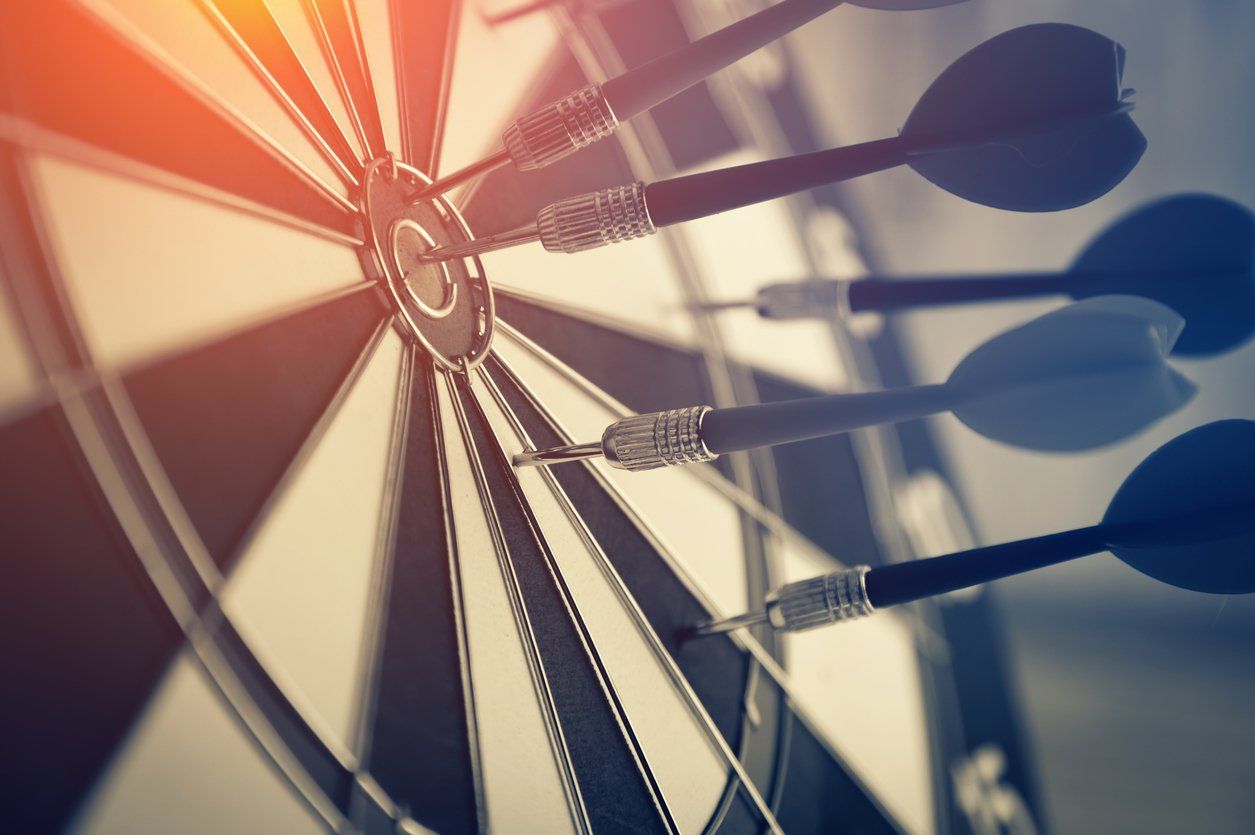
The game of darts is a sport that can be enjoyed by everyone regardless of age or gender, and it's becoming more and more popular. People play for fun while others take this sport very seriously...very, very seriously. We have gathered up a few facts about how to set up your new dartboard and other how to's like how to play, how to throw, etc.
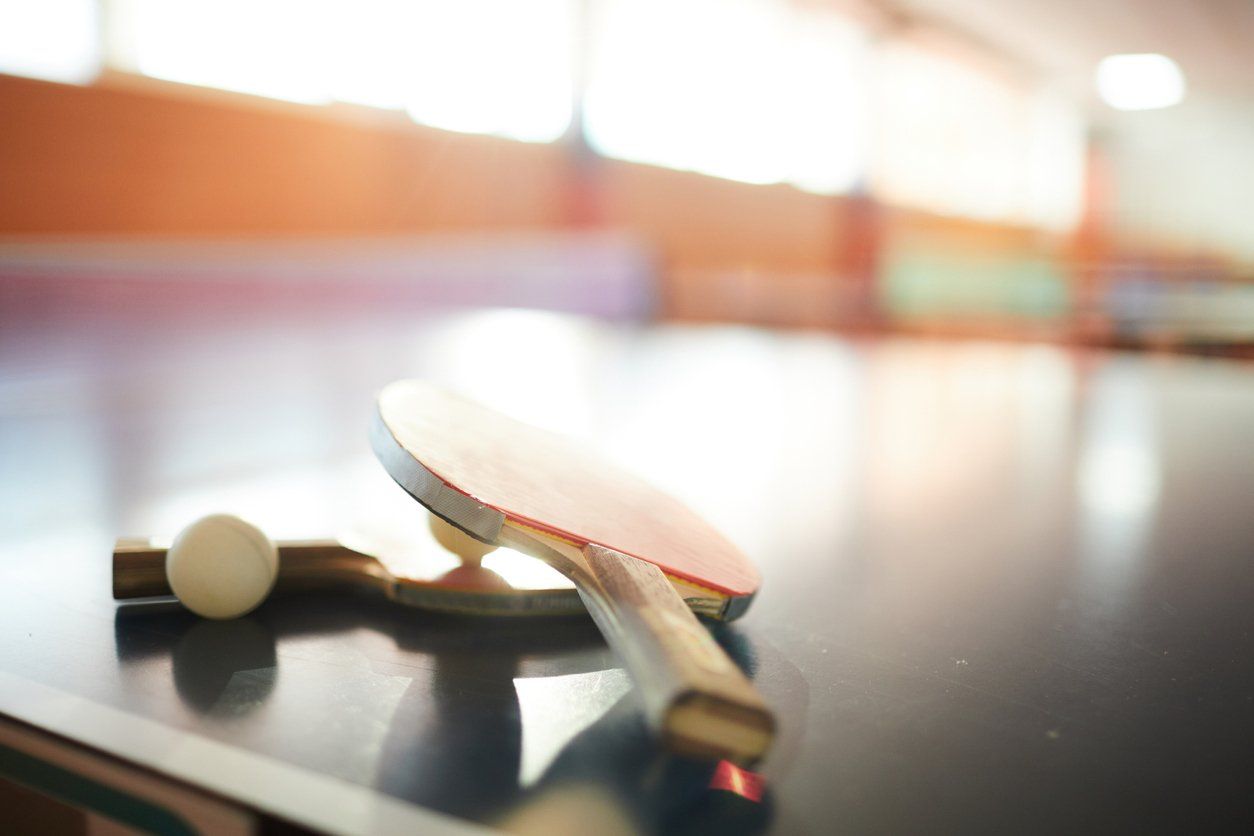
FACTS: Table-tennis or, yes, ping-pong is indeed a sport (most people don't know that). Thi s sport is for EVERYONE! It can be played for someone's whole life! You can be male or female, young or old, disabled or able-bodied and can compete against each other. No matter if you're 18 months old or 100, you can still master this game! It is the third largest participation sport in the world right after soccer and cricket. The best player in history is Sweden (nope, not Chinese...GASP). His name is Jan-Ove Waldner or “The Mozart of Table Tennis” as he is known in this sport. Before his retirement in 2016, he had won 16 World Championships medals AND a gold and silver medals in the Olympics. HISTORY: The game as we know it started in England in the 1800's. The creators tried to mimic the popular lawn tennis for the indoors. We would say that they succeeded. Names such as Ping-Pong, Indoor Tennis, & Gossima were originally trademarked names form the earliest manufactures all for the same game, table tennis. In the 1920's, owners of the "Ping-Pong" name actually threatened legal action for anyone using that name without using their equipment. This is around the time that "Table Tennis" became the official name of the sport. HEALTHY BENEFITS: It puts less stress on the joints if played recreationally and provides some with needed exercise. Table-tennis has been shown to activate more parts of the brain than any other sport. Doctors recommend table-tennis to the elderly to help battle mental diseases such as Alzheimer’s & dementia. Exercise keeps the body young and table-tennis is an excellent way to keep the brain young. Don't believe us? Check out this story from ABC News: This is Your Brain on Ping Pong Playing table tennis improves hand-eye coordination. Playing stimulates mental alertness, concentration and tactical strategy as well. This makes it the perfect game for young people to sharpen reflexes, and for older people to refine tactics. Considering the fact that the sport is entertaining and can be fast paced, it can be a fun and easy way to burn calories. As with any sport, this is a great opportunity to meet new people and make new friends which is great for your mental health. RANDOM FACTS: There is an actual Governing Body & Constitution of Table Tennis called the International Table Tennis Federation (ITTF)...It's not as scary as it sounds we hope! The rules have mostly remained the same for over 100 years. Ping Pong reunited China with the world! In 1971, China invited the USA, Canada, England & Columbia to play a friendly ping pong tournament. This was after China had not spoken to these countries in over 6 years. This tournament became known at the Ping Pong Diplomacy. After this, political relations between the US & China started to soften up a bit and in 1972, President Richard Nixon visited China in order to develop collaboration between the two countries. China has over 100 million table tennis players with 40,000 of those being pros. Table tennis was banned in the Soviet Union from around 1930 to 1950. They believed that the sport was harmful to the eyes.
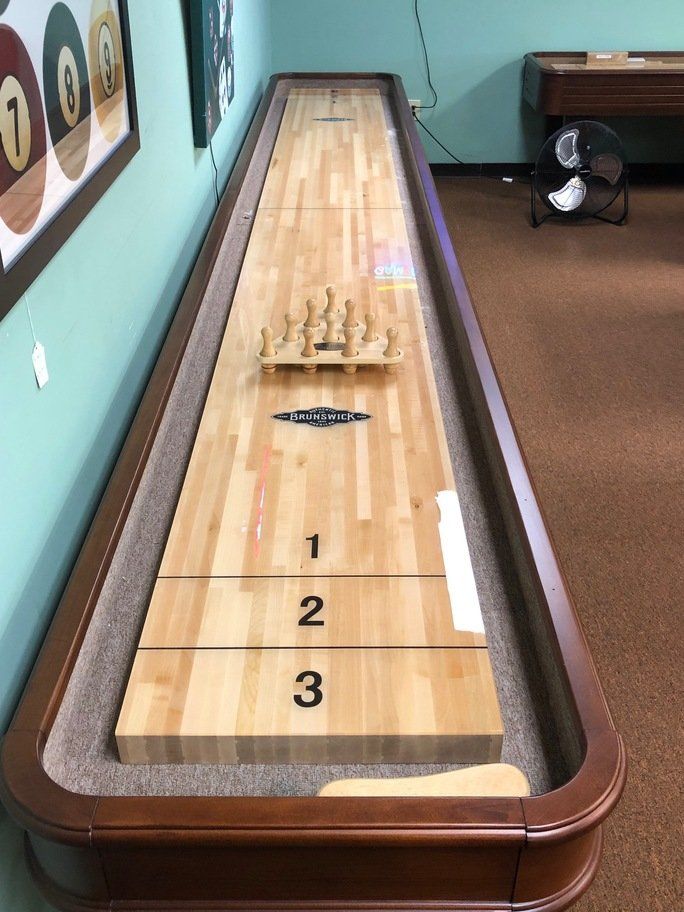
Shuffleboard is a unique game for all ages that dates back over 500 years. If you can stand or even sit at the end of a shuffleboard table, you can glide the pucks down the table. Shuffleboard has made a strong, steady climb back over the last decade with few changes. The gaining of its popularity is due to the fact that is easy to learn and easy to play. If you are ready to start playing or just want to learn more about the game, check out a few facts about this game below. WHAT YOU NEED To play shuffleboard, the major things that you need are: Shuffleboard table - Come by Jones Brothers and we'll help you find the perfect table! Set of pucks Scoring Beads - A scoring bead is designed like an abacus. It is a means of scoring in table shuffleboard. Bowling Pins - This gives players different options of playing the game. HOW TO PLAY The first player slides his/her first puck to the other end of the board trying to make in to one of the numbers blocks labeled "1, 2, or 3". Then his/her opponent shoots his/her own puck with an attempt to knock off the first player's puck. It might also be to shoot their punk further down the board than their opponent. The choice depends on the skill and the instinct of the player. Both players continue to shoot their pucks in an alternating turn until all the pucks have been shuffled (played). This makes it a single round. The player whose puck moves furthest down the board is the winner, and they collect the number of points that correspond with the number block that their punk in on. The game can be played by two people (single) and also by four people (double). TIPS P lacement of your puck is crucial. This is a skill that needs constant practice. It is important to place your puck at the far end of the board without it falling out of the large framed triangle at the end of the court. B e offensive minded: As you learn how to play shuffleboard, try to knock off your opponent’s highest scoring pucks to prevent them from scoring. Be defensive minded. You have to place many of your pucks in front of your highest scoring puck so that your opponent will not be able to knock you off or score. FACTS SIZE OF THE BOARD Shuffleboard tables range in size from 9 to 22 feet in length, 16 to 20 inches in width and the thickness of the board ranges from 1.5 inches to 3 inches. The most common tables are between 12' to 16' in length. Just remember when purchasing a shuffleboard table you will need to leave space in your room to have at least 2 feet on each end for players to shoot. This means if you were buying a 14' table you will need a space of at least 18' to make it easier to play. SHUFFLEBOARD "SAND" Shuffleboard "sand" is not sand at all! Shuffleboard wax, also known as sand or salt, is a what is sprinkled on table to decrease friction between the puck and the table. It also helps to preserve the tables thickness, and increase the speed of weights as they glide across the table. It is one of the most essential accessories you need to play table shuffleboard. SHUFFLEBOARD TABLES ARE NOT FLAT You read that right! Shuffleboard tables are usually concave meaning that the table bows down slightly in the center. This helps keep the pucks on the table instead of flying off. SHUFFLEBOARD PLACEMENT You want to keep your shuffleboard table away from windows because of the inconsistencies in the daily changes in temperature and sun exposure. The sun will dry out your table's surface and can even bow your table.
